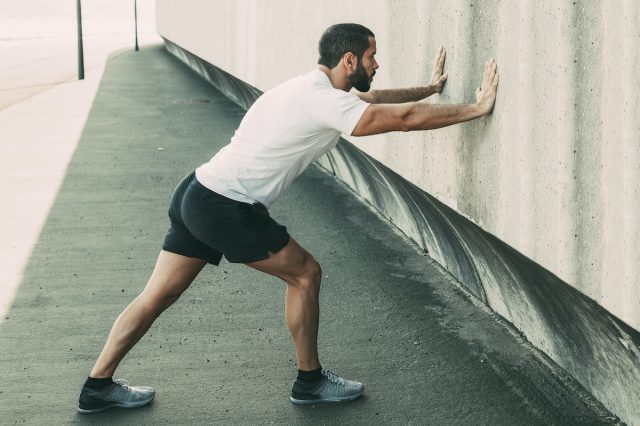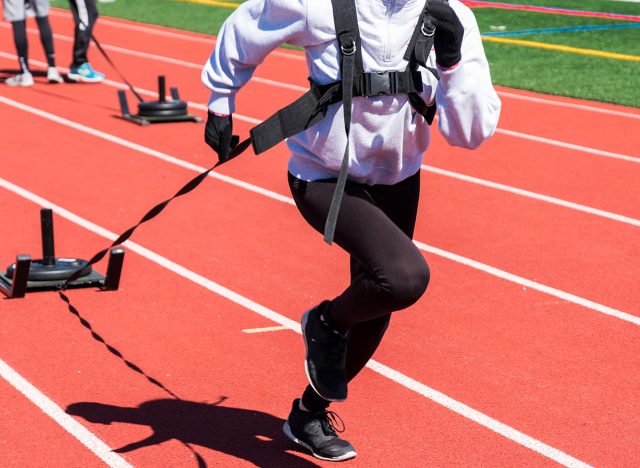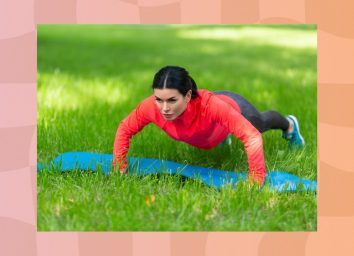The Sprint Workout That Builds More Power Than the Gym

Sprinting isn't just something you leave behind in high school track. It's the gold standard for raw, explosive power. Whether you're an athlete, weekend warrior, or someone who wants to turn heads at the park, your ability to sprint fast—really fast—for even just 30 seconds tells the world your legs, lungs, and power are in another league.
It's the reason NFL scouts time the 40-yard dash, elite fighters run hill sprints, and sprinters have some of the most ripped, powerful physiques in sports. When done right, sprinting trains your glutes, hamstrings, calves, core, and posture. There is no equipment, no fluff, just pure output.
So, how fast is elite for a 30-second sprint? Let's break it down.
Speed Rankings: How Fast Are You?
- Beginner: Under 150 meters in 30 seconds
You're starting to tap into that power base. Focus on mechanics, posture, and turnover. - Intermediate: 150 to 180 meters in 30 seconds
You've got decent acceleration and conditioning. You're starting to move like an athlete. - Advanced: 180 to 200+ meters in 30 seconds
Your stride is strong and efficient. Your hamstrings and glutes are firing. You're sprinting, not just running. - Elite: 200+ meters in 30 seconds (~15+ mph or 24+ km/h)
You're generating serious power and speed. This is top-tier explosiveness—professional athlete territory.
The Best Sprint & Strength Drills for Next-Level Speed
Elite sprinting isn't built on sprinting alone. You need a toolbox of drills that target your hips, hamstrings, stride mechanics, and sprint-specific force output. Add these to your weekly routine.
High Knees

Why: Trains sprint turnover, coordination, and knee lift.
How to:
- Stand tall with your arms bent at 90 degrees.
- Drive your knees up toward hip height as fast as possible.
- Land on the balls of your feet.
- Pump your arms in rhythm with your legs.
- Go for 10 to 20 seconds per round.
Butt Kicks

Why: Fires up hamstrings and improves recovery mechanics.
How to:
- Stay tall and slightly lean forward.
- Kick your heels to your glutes in a quick rhythm.
- Keep your knees pointed straight down.
- Maintain fast turnover and light ground contact.
- Go for 10 to 20 seconds per round.
Wall Drill

Why: Locks in sprint posture and builds ankle/knee drive control.
How to:
- Face a wall and lean forward at a 45-degree angle.
- Place both hands on the wall for balance.
- Drive one knee up, foot flexed, then switch.
- March in rhythm or perform fast-switch bursts.
- Do 2–3 rounds of 10–15 reps per side.
Power Skips

Why: Improves single-leg power and rhythm in sprint mechanics.
How to:
- Skip forward, but explode off one leg each rep.
- Drive your opposite knee high and swing your arm.
- Land softly and reset for the next skip.
- Keep your body upright and chest tall.
- Perform 20–30 yards per set.
Sled Pushes

Why: Trains full-body drive and horizontal sprinting power.
How to:
- Load a sled with moderate-to-heavy weight.
- Lean forward and drive through the ground.
- Take short, explosive steps for 10 to 30 yards.
- Keep hips low and spine neutral.
- Do 3 to 5 rounds with complete recovery.
Sled Sprints

Why: Forces max effort acceleration from a dead start.
How to:
- Load a sled lightly—just enough resistance to challenge speed.
- Sprint forward explosively.
- Keep a forward lean and powerful arm action.
- Sprint 10 to 20 yards with max intensity.
- Rest 60 to 90 seconds between efforts.
Romanian Deadlifts (RDLs)

Why: Strengthens your sprint engine—glutes and hamstrings.
How to:
- Hold dumbbells or a barbell in front of your thighs.
- Hinge at the hips with a flat back and soft knees.
- Lower the weights until you feel a stretch in your hamstrings.
- Drive through your heels to return to standing.
- Do 8 to 2 reps with a controlled tempo.
Hill Sprints

Why: Builds power and acceleration mechanics with less joint stress.
How to:
- Find a hill with a moderate incline (10 to 20%).
- Sprint up at 90 to 95% effort for 15 to 30 seconds.
- Walk back down for full recovery.
- Focus on aggressive arm drive and forward lean.
- Do 4 to 8 rounds depending on your fitness.
Sprint Smarter: Your Guide to Frequency, Warm-ups & Recovery
You can't sprint all out every day and expect to get faster. Sprinting is intense—it hits your nervous system, joints, and muscles hard. Follow this guide to get the benefits and avoid burnout.
How Often Should You Sprint?
- Beginners: 1 to 2 times per week.
- Intermediate/Advanced: 2 to 3 times per week.
- Always separate high-intensity sprint days with at least 48 hours of recovery.
How Long Should a Sprint Workout Be?
- Main sprint sets: 4 to 8 sprints of 10 to 30 seconds.
- Rest periods: 1 minute for every 10m, otherwise 2 minutes is a solid standard.
- Total time: 20 to 30 minutes including warm-up and cooldown.
When Should You Sprint—Before or After a Workout?
- Before: Always sprint before heavy lifting or conditioning. Sprinting on tired legs leads to bad mechanics and sloppy output.
- If sprinting is your priority, train it fresh.
Sprint Warm-Up (Do This Every Time)
- Light jog or bike: 3 to 5 minutes.
- Dynamic stretches (leg swings, lunges with rotation, arm circles, quad pulls, hamstring sweeps): 3 to 5 minutes.
- Sprint drills: High knees, butt kicks, wall drill, power skips.
- Strides: 2 to 3 sprints at 60 to 80% speed to groove form.
How to Recover Between Sprint Sessions
- Sleep 7 to 9 hours nightly.
- Walk or do light mobility work on off days.
- Foam roll your quads, hamstrings, and calves.
- Hydrate and eat enough protein to support muscle repair.
- Never sprint sore—respect your recovery window.
Final Kick
Sprinting for 30 seconds at full speed isn't just a test of your legs. It's a test of your will, mechanics, strength, and engine. If you can hit 200+ meters in 30 seconds, your explosiveness is elite.
Use the drills, follow the plan, sprint with intent, and when it's time to go, give it everything you've got.









